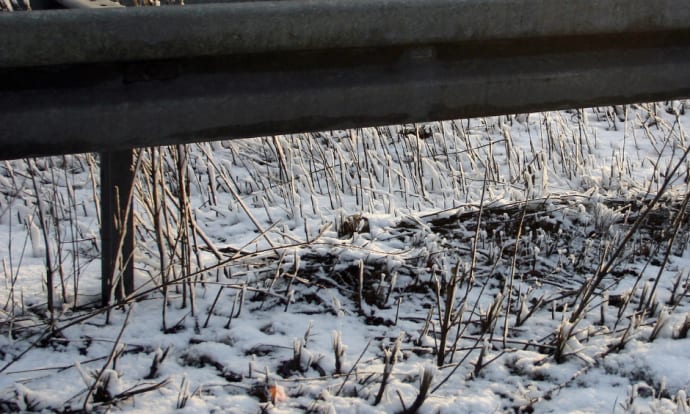How to Ensure Safety in Car Parks During the Cold Season

The Problem with Chilly Car Parks
Car parks can be tricky locations at any time of the year, but the cold weather increases the risks even further. Not only can ice and snow make the surfaces of the car park slippery, but the cold can also exacerbate hazardous conditions. For instance, visibility may be affected by a frozen-over windshield, there’s an increased risk of mechanical failure (especially for diesel vehicles), and ultimately a higher risk of accidents. In addition, the cold can lead to more driver mistakes, as people aren’t used to driving in snowy or icy conditions in the UK.
To help ensure the safety of your employees & visitors, it’s essential to be prepared for the cold weather and take the necessary precautions. In this blog, we’ll discuss how to minimise risk during winter and provide tips for creating an effective winter car park safety plan.
Preparing Your Car Park for Winter
The first step to preparing a car park for winter is to conduct a risk assessment before the cold takes over and fix any underlying issues:
- Check the lighting: make sure that all the lights in the car park are working properly. This will help ensure that the car park & traffic signage is well-lit and will reduce the risk of accidents.
- Inspect the pavement: are there any cracks or other damage that might become hazardous in icy or snowy conditions? If necessary, repair any damage before the cold weather arrives, considering that changing temperatures can inflict even more severe harm.
- Remove obstructions: any debris, twigs, fallen leaves, or trash. Whilst they can be hazardous by themselves, adding snow and ice to the mix – not only can hide them from view, but also increase the risk of accidents.
- Install crash barriers: to reduce potential harm to pedestrians. As well as, protecting buildings, structures, or other vehicles from crashes. Crash barriers, like Armco, are also highly visible – clearly communicating off-limit areas for drivers.
- Ensure that the drainage system is working properly: this will help to prevent snow and ice from accumulating.
Tips for Individuals to Stay Safe
Once you have prepared your car park for winter, it’s important for individuals to take the necessary precautions to stay safe. Here are some tips:
- Drive slowly: Snow and ice can make driving conditions more hazardous. When driving in the car park, it’s important to slow down and drive cautiously.
- Watch for icy patches: Pay attention to the pavement and watch out for icy patches. If you see any, avoid them or carefully drive around if possible.
- Wear appropriate clothing: ensure that you are visible to other drivers. Reflective clothing or bright colours can help you stand out in the car park and make you more visible to other drivers.
- Be aware of your surroundings: keep an eye out for other drivers. Pay attention to the traffic in the car park and watch out for any potential hazards.
Dealing with Snow & Ice
Ice and snow are probably the biggest hazards a car park can face during the cold months of the year. It’s crucial to take the necessary precautions:
- Clear the snow: it can’t be emphasised enough how important it is to do this as soon as possible. As driven over snow accumulates and over time becomes extremely hard to drive on and clean, increasing the risk of accidents exponentially.
- Spread salt or sand: it can help reduce the slipperiness of snow & ice and even melt it. This will reduce the risk of slipping and falling.
- Optional: install under-road heating in the car park to help melt the snow and ice and reduce most of the risks brought by the cold. However, it’s an expensive investment and might not be completely worth the money if you’re in the UK.
Creating an Effective Winter Car Park Safety Plan
An effective winter car park safety plan is essential to meet health, safety, and well-being regulations as an employer. We’ve prepared some advice:
- Develop a written policy: outline the safety procedures for the car park. Include rules for the use of the car park, such as speed limits, safe pedestrian walkways, and traffic patterns.
- Provide training: educate employees and visitors on the safety procedures for the car park and how to drive appropriately in these environments.
- Post signs: to remind visitors of the safety procedures. Additionally, make sure the signage is always visible.
- Monitor the car park: regularly check the car park for potential hazards or risks that may have appeared.
- Create a schedule: for clearing up snow, ice, or any excess forming around the area. After all, it’s cheaper & less time-consuming to deal with the issues in advance.
What to Do in Case of an Emergency in the Car Park
In case of an emergency in the car park, it’s important to know how to act. Here are some tips:
- Call for help: If you see an accident or other emergency, call for help immediately.
- Move away from the scene: moving your vehicle away from the accident or emergency helps avoid any additional hazards and provides easier access to emergency services.
- Provide assistance: If you are able, provide first aid to anyone who is injured or in distress.
Conclusion
Car park safety is essential, especially during the cold winter months. To ensure the safety of your employees or visitors, it’s essential to be prepared for the cold weather and take the necessary precautions.
This includes preparing the car park for winter, taking the necessary steps to stay safe, and creating an effective safety plan. In addition, it’s crucial to maintain and clean the car park regularly. By following these tips, you can help ensure the safe usage of your car park during winter.


